- JST Home
- /
- Strategic Basic Research Programs
- /
 ACT-X
ACT-X- /
- Research Director/
- Trans-Scale Approach Toward Materials Innovation/
- [Trans-scale] Year Started : 2023
[Trans-scale] Year Started : 2023
Kazutaka Akiyoshi
Development of Chalcopyrite-type Semiconductor Nanoparticles Using Earth-Abundant Elements and Control of Their Optical Properties
Grant No.:JPMJAX23D1
Researcher
Kazutaka Akiyoshi
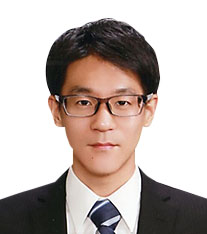
Assistant Professor
Faculty of Engineering
Nagoya University
Outline
To address the energy challenges targeted by the Sustainable Development Goals (SDGs), the effective utilization of light energy in the infrared regions, which accounts for approximately half of all solar energy, presents a formidable task. This research focuses on multinary semiconductor nanoparticles composed of earth-abundant elements such as iron, copper, and sulfur within the I-III-VI group of chalcopyrite semiconductors. Our goal is to develop synthesis methods, separation, and sorting techniques, while also striving to commercialize high-efficiency solar cells and photocatalysts through the transformation of these materials into macro-thin films with exceptional light confinement capabilities.
Tatsuya Arai
Real time observation for the dynamics of polymer nanocomposites by using diffracted X ray blinking method
Grant No.:JPMJAX23D2
Researcher
Tatsuya Arai
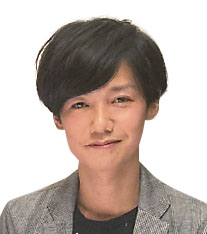
Assistant professor
Faculty of Advanced Life Science
Hokkaido University
Outline
In the field of polymer composites, it is widely recognized that nanoscale dynamics are closely related to macroscopic properties. Therefore, there is great anticipation for the advancement of direct observation techniques for such dynamics. In this study, a novel method called the diffracted X ray blinking (DXB) method has been developed to estimate the dynamics of polymer nanocomposites from the speed of fluctuations in time resolved X ray diffraction intensity. Using the DXB method, I aim to measure the dynamics of various rubbers and gels and elucidate their relationships with macroscopic properties as the ultimate goal of this research.
Yoshiki Ishii
Nanostructural Computational Chemistry toward Understanding Molecular Assembly Functions of Hybrid Soft Materials
Grant No.:JPMJAX23D3
Researcher
Yoshiki Ishii
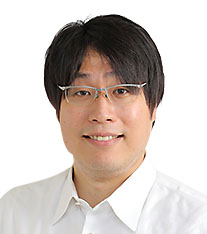
Junior Associate Professor
School of Frontier Engineering
Kitasato University
Outline
Hybrid soft materials consisting of organic and inorganic molecules can exhibit various materials functions through strongly-bonding in the inorganic domain and diversely-forming soft and complex meso-scale assemblies with large degrees-of-freedom in the organic domain. In this study, by using theoretical approaches of computational chemistry for molecular interaction in the nanodomains, we challenge to construct a trans-scale science to interconnect from the structural information of a molecule, via nano- and meso-scale assembly structures, to macro-scale properties of hybrid soft materials.
Hikaru Okubo
Hierarchical understanding of lubrication mechanisms of SRT materials and development of new functions
Grant No.:JPMJAX23D4
Researcher
Hikaru Okubo
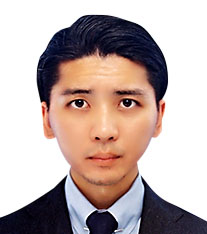
Associate Professor
Faculty of Environment & Information Sciences
Yokohama National University
Outline
To understand the hierarchical structure of “soft and resilient tribological (SRT) materials” and to understand their lubrication mechanism hierarchically, by performing “simultaneous-operando measurement” that can monitor trans-scale dynamic interface information: “static and dynamic responses in the contact region of sum-mm order”, “interface thickness of µm order” and “molecular information of nm order”. Based on the obtained knowledge, we will attempt to explore the new functions of SRT materials.
Kazuho Okada
Improvement of fatigue limit by suppressing crack nucleation using pre-fatigue deformation in high-strength steels
Grant No.:JPMJAX23D5
Researcher
Kazuho Okada
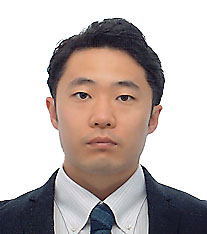
Senior Researcher
Research Center for Structural Materials
National Institute for Materials Science
Outline
Low fatigue limit of the high-strength steels has been a major issue for the wide-range application of high-strength steels. In the present research, I found that fatigue limit of the pre-fatigued high-strength steel was two times higher than that without pre-deformation. The improvement of fatigue limit was due to the suppression of crack nucleation. The objective of this research is to clarifying the characteristic of crack-nucleation-resistant microstructure by considering mechanism of the improvement of fatigue limit in the pre-fatigued high-strength steel. The present research is expected to obtain the materials design guideline for the improvement of fatigue limit by suppressing crack nucleation.
Shintaro Okumura
Development of Innovative Photocatalysts for Reductive Degradation of Polyester Plastics
Grant No.:JPMJAX23D6
Researcher
Shintaro Okumura
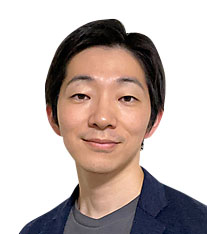
Assistant Professor
Graduate School of Engineering
Kyoto University
Outline
Environmental pollution caused by plastics has become a social problem in recent years, making it urgently important to develop techniques for recycling plastic products. In this project, I will develop a new method for degradation of polyesters, one of the common plastics, through photocatalytic reduction. I aim to create an effective photocatalyst for ester reduction and realize “trans-scale” from the reduction of monomeric esters to the reductive degradation of polyesters.
Soichi Kikkawa
Design of Thermal Nonequilibrium Intermetallic Alloy Compounds by Topochemical Electrolysis
Grant No.:JPMJAX23D7
Researcher
Soichi Kikkawa
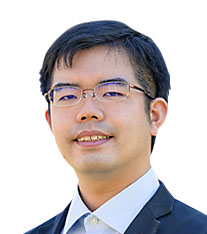
Assistant Professor
Graduate School of Science
Tokyo Metropolitan University
Outline
In this study, this project plans to synthesize intermetallic alloy nanoparticles from metal oxide templates with various structure factors and under various electrolysis conditions, and to measure the electrochemical formation dynamics of the thermal nonequilibrium intermetallic alloy nanoparticles by using operando trans scale spectroscopy which combines bulk and surface analysis. In addition, this project aims to generalize the design principle of intermetallic alloy nanoparticle via the topochemical electrolysis and to establish the method to explore a novel thermal nonequilibrium intermetallic alloy compounds by controlling the crystal structure of metal oxide templates.
Soh Kushida
Trans-scale Materials for the Vibrational Polariton Condensation
Grant No.:JPMJAX23D8
Researcher
Soh Kushida
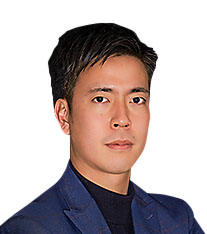
Assistant Professor
Faculty of Pure and Applied Sciences
University of Tsukuba
Outline
This study aims to utilize molecular vibrations as a quantum material. The main challenges to overcome include a significant extension of the lifetime of molecular vibration, which typically decays in sub-picosecond, and the dense aggregation of these vibrational oscillators. By achieving both using various chemical techniques, vibrational polariton condensation is aimed to be achieved. In this regime, the molecular vibrations that are originally a nano-scale quantum many-body system would turn to be a macroscopic quantum entity in a trans-scale manner.
Yuta Kurashina
Acoustic nanonuclei for ultrasonic therapy of cellular functions
Grant No.:JPMJAX23D9
Researcher
Yuta Kurashina
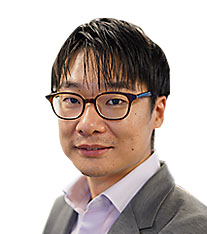
Associate Professor
Institute of Engineering
Tokyo University of Agriculture and Technology
Outline
Our goal is to manipulate neural activity by ultrasound, and to realize cell manipulation therapy. To achieve this goal, we aim to synthesize acoustic nanonuclei to amplify ultrasound waves deep in the body, and to elucidate the mechanisms of the effects of MHz ultrasound waves on acoustic nanonuclei. This research will be the first step toward the innovative medical technology that enables non-invasive and remote manipulation of cells.
Minoru Kurisu
Development of microscale membrane compartments showing inflation and division.
Grant No.:JPMJAX23DA
Researcher
Minoru Kurisu
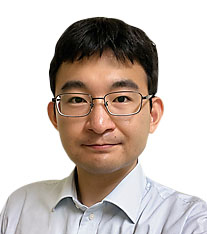
Assistant Professor
Graduate School of Science
Tohoku University
Outline
Specific amphiphilic molecules assemble in water, forming microscale membrane compartments. Since these vesicles can encapsulate functional molecules and chemical reactions, vesicles are promising materials for next-generation vaccines and cell-sized molecular robotics. While vesicles are typically used as static membrane compartments, this project develops dynamic vesicles that can grow, divide, and then proliferate into hundreds of vesicles. The key behind such morphological changes is the trans-scale relationship between the microscale shapes of vesicles and the nanoscale shapes of amphiphilic molecules. These dynamic vesicles will provide innovative strategies for chemistry and engineering to regulate the molecular distribution and chemical reactions in microscale.
Kiyonori Takahashi
Development of Scalable Molecular Ferroelectric Materials
Grant No.:JPMJAX23DB
Researcher
Kiyonori Takahashi
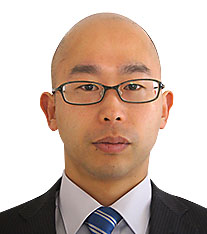
Associate Professor
Faculty of Advanced Science and Technology
Kumamoto University
Outline
By doping small-sized cations into one-dimensional ferroelectrics and systematically controlling the correlation length, a design guideline for molecularly tunable relaxor ferroelectrics will be proposed. Design guidelines will be found for novel molecular-level tunable ferroelectrics by molecular modification of polarization reversal units to achieve high-density integration. Multivalent cationic molecular machines will be developed and evaluated as single molecule electret.
Hozumi Takahashi
Development of innovative optical technologies for control of crystallization
Grant No.:JPMJAX23DC
Researcher
Hozumi Takahashi
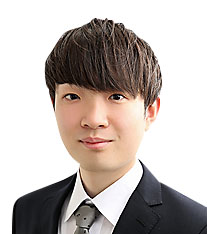
Assistant Professor
Graduate School of Engineering
The University of Osaka
Outline
The engineering properties of laser, such as gathering, arranging, and breaking of materials, hold significant promise as a new approach for control crystallization. In this project, I’m going to develop a novel optical system combining laser ablation (breaking objects) and optical tweezers (gathering and arranging objects) in order to control the crystallization precisely. I will also demonstrate the optical analysis of the crystallization process to understand the crystallization mechanism on a trans-scale. Based on these knowledges, I create innovative technologies that can realize control of crystal shape and structure at will.
Takuya Taniguchi
Systematic Development of Organic Solid Transitions Using Machine Learning
Grant No.:JPMJAX23DD
Researcher
Takuya Taniguchi
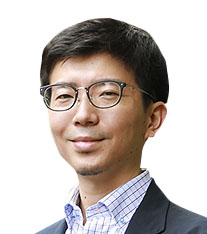
Associate Professor
Center for Data Science
Waseda University
Outline
In this research, I employ machine learning potentials as an alternative to density functional theory (DFT) to conduct molecular dynamics (MD) simulations with efficiency and DFT-level accuracy, generating previously unidentified phase transitions in organic solids. Specifically, I focus on structural phase transitions induced by temperature changes and applied stress. After conducting computational screening, I proceed with experimental validation and functional evaluation.
Takuro Tsutsumi
Development of Functional Polymers Pioneered by Structure-Activity Relationship Analysis
Grant No.:JPMJAX23DE
Researcher
Takuro Tsutsumi
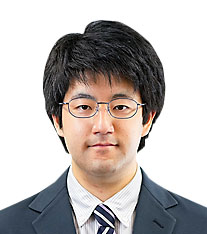
Assistant Professor
Faculty of Science
Hokkaido University
Outline
Developing innovative polymeric materials that provide the foundation for a prosperous life requires experimental trial and error. In order to accelerate polymer design and development, understanding the structure-activity relationship (SAR) for polymers is important. This project develops the complete enumeration method to generate all structural isomers of a given polymer unit structure and the structural feature extraction method based on a dimension reduction technique. With the feature extraction from the results of theoretical simulations for the enumerated homopolymer group in isolated and solution systems, SAR based on an exhaustive polymer database can be achieved. This approach aims to provide a guideline for designing functional polymers based on an atomic-level understanding that transcends the spatial-scale concept.
Shun Dekura
Creation of organic nano plastic crystals and emergence of dynamic functionalities
Grant No.:JPMJAX23DF
Researcher
Shun Dekura
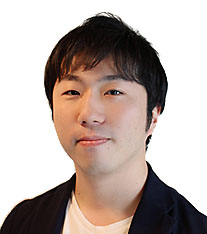
Assistant Professor
Institute of Multidisciplinary Research for Advanced Materials
Tohoku University
Outline
Plastic crystals (PCs), which are solid-like but exhibit molecular motions like liquids, are attracting attention as a new class of functional materials. This research aims to create “organic nano-PCs”, where molecular motions are dramatically enhanced and controlled by nano-sizing, and to realize emergent dynamic functionalities such as ferroelectricity and super multi-valent ionic conduction leading to the realization of next-generation all-solid-state batteries. Based on the establishment of the science of organic nano-PCs, this research will contribute to energy issues and the realization of a sustainable future society.
Hiroki Hanayama
Precise synthesis and arrangement control of metal nanostructures
Grant No.:JPMJAX23DG
Researcher
Hiroki Hanayama
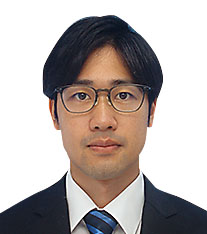
Assistant Professor
Graduate School of Engineering
Chiba University
Outline
When harnessing organic and metal nanostructures as materials, the interactions between nanostructures are crucial, and their arrangement and structuring in a mesoscale play a key role in achieving excellent material properties. However, controlling the long-range ordering and curvature of metal nanostructures on the nanoscale remains challenging. In this study, I aim to establish the principles of host-guest chemistry between molecular assemblies and metal nanostructures. Based on this knowledge, I will achieve the creation of metal nanostructures and control their arrangement, using supramolecular polymers.
Kaito Hirata
Development of Scanning Electrochemical Cell Microscopy for Elucidation of Photocatalytic Reaction Mechanism
Grant No.:JPMJAX23DH
Researcher
Kaito Hirata
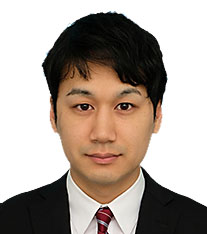
Assistant Professor
Graduate School of Engineering
Nagoya Institute of Technology
Outline
Water splitting reaction utilizing the photocatalyst attracts much attention for the achievement of carbon neutrality. To improve the efficiency of the reaction process, we demand an understanding of the reaction mechanism in detail. However, the elucidation of the mechanism has been hindered due to the lack of techniques enabling the direct observation of the local photocatalytic reaction. So far, macroscopic electrochemical measurement has been widely used, yet the averaged information has limited our understanding of the local distribution of the photocatalytic reactions. To overcome this limitation, in this study, we will develop scanning electrochemical cell microscopy that enables directly obtaining the redox current and the carrier dynamics in the local electrochemical cell formed using the nanopipet.
Toshiya Fukunaga
Network construction of nanocarbon molecules with soft chirality
Grant No.:JPMJAX23DI
Researcher
Toshiya Fukunaga
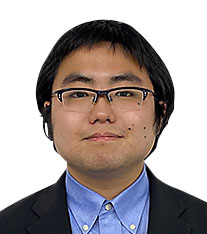
Assistant Professor
School of Science
The University of Tokyo
Outline
This project aims to construct networks by linking the diamond twin, chiral carbonaceous materials with uniquely high symmetry, as base units. The molecular structures for the network construction will be designed with a focus on controlling the inherent soft chirality of the diamond twin. The synthesized molecules of the base units will be subjected to the conditions of the network construction to afford one dimensional and two dimensional networks. The structures of the obtained networks will be evaluated from the viewpoint of atomic, meso, and macro scales. Furthermore, the functionality derived from the unique soft chirality will be also investigated.
Hiroshi Masuda
Promotion of ductility in ceramics at microscopic scales
Grant No.:JPMJAX23DJ
Researcher
Hiroshi Masuda
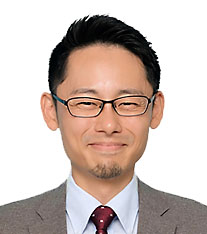
Lecturer
School of Engineering
The University of Tokyo
Outline
This study investigates the impacts of microstructures on small-scale mechanical properties of ceramics through micromechanical testing and finally determines the potential factors that can control the ductility of ceramics.
Hiromichi Miyagishi
Precise Synthesis of Topological Polymers using Microflow Technology
Grant No.:JPMJAX23DK
Researcher
Hiromichi Miyagishi

Assistant Professor
Faculty of Science
Hokkaido University
Outline
The entanglement of microscale molecular chains significantly influences the mechanical properties of polymer materials. However, strategies for precisely controlling the topology of polymers are limited, and a trans-scale understanding that links the topology of microscale molecular chains to macroscopic mechanical properties is still in progress. In this study, I leverage microflow synthesis technology to control the topology and sequence of crosslinkers in topological polymers, contributing to the trans-scale understanding of topological polymers.
Atsuya Yaguchi
Development of trans-scale materials for constructing highly developed biological tissue
Grant No.:JPMJAX23DL
Researcher
Atsuya Yaguchi
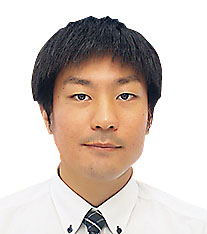
JSPS Research Fellowship for Young Scientists
Graduate School of Medical Life Science
Yokohama City University
Outline
Biological functions can be understood by transcending scales, from the mechanisms of biomolecules to the coordination between tissues, organs, and even between different organs. In this research, I aim to develop novel extracellular matrix-mimetic materials that enable the reconstruction of life processes conducted at such trans-scales. Furthermore, I will try to construct highly developed biological tissues using the novel materials designed from the molecular level, with the goal of applying them as methods for understanding the mechanisms of life functions.
Yuichiro Watanabe
Field-effect nanoscale control in supramolecular polymers and materials
Grant No.:JPMJAX23DM
Researcher
Yuichiro Watanabe
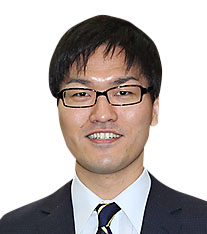
Assistant Professor
Department of Polymer Chemistry
Kyoto University
Outline
I propose to use external electric fields for controlling supramolecular polymers with polarized monomers. I will investigate whether external electric fields can regulate the conditions for supramolecular polymer formation that proceeds through nucleation and elongation processes. This should enable highly oriented intermediates to be formed within the electrostatic double layer, where the field effect is greatest. I will also explore meso- and macroscopic structures of supramolecular polymers that may be controlled by external field effects, complemented with solid-state structure analyses for insights into how external electric fields can be used to open up the prospect of material applications.













